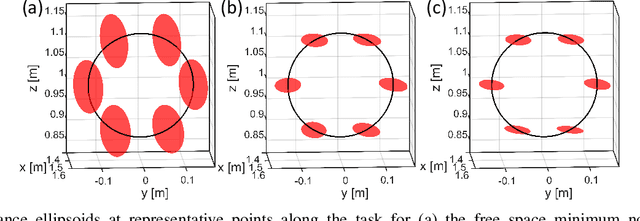Kinematic Modeling and Compliance Modulation of Redundant Manipulators Under Bracing Constraints
Paper and Code
Aug 11, 2020



Collaborative robots should ideally use low torque actuators for passive safety reasons. However, some applications require these collaborative robots to reach deep into confined spaces while assisting a human operator in physically demanding tasks. In this paper, we consider the use of in-situ collaborative robots (ISCRs) that balance the conflicting demands of passive safety dictating low torque actuation and the need to reach into deep confined spaces. We consider the judicious use of bracing as a possible solution to these conflicting demands and present a modeling framework that takes into account the constrained kinematics and the effect of bracing on the end-effector compliance. We then define a redundancy resolution framework that minimizes the directional compliance of the end-effector while maximizing end-effector dexterity. Kinematic simulation results show that the redundancy resolution strategy successfully decreases compliance and improves kinematic conditioning while satisfying the constraints imposed by the bracing task. Applications of this modeling framework can support future research on the choice of bracing locations and support the formation of an admittance control framework for collaborative control of ISCRs under bracing constraints. Such robots can benefit workers in the future by reducing the physiological burdens that contribute to musculoskeletal injury.
 Add to Chrome
Add to Chrome Add to Firefox
Add to Firefox Add to Edge
Add to Edge